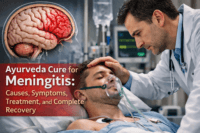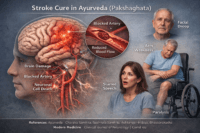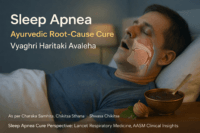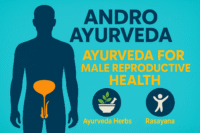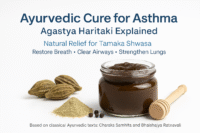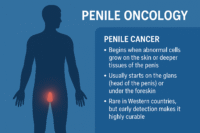- Epidemiology and Global Burden
- Pathophysiology – Modern Medical Science
- Ayurvedic Pathophysiology (Samprapti)
- Types and Variants
- Triggers and Risk Factors
- Symptoms and Clinical Stages
- Diagnosis
- Modern Management
- Ayurveda Cure Through Avaleha Medicine
- Formulations for Migraine
- Authentic Ayurvedic Method for Migraine Avaleha (Pathyadi Avaleha for Ardhavabhedaka)
- Classical Preparation Steps
- Dosage
- Key Therapeutic Benefits
- Precautions
- Classical Verse
- Frequently Asked Questions (FAQs)
- References
Migraine Beyond a Headache
Migraine Ayurvedic Cure begins with understanding that migraine is not a mere headache; it is a complex neurological and psychosomatic disorder that affects nearly one in seven people worldwide. This condition disrupts careers, relationships, and emotional balance, ranking among the top disabling disorders recognized by the World Health Organization [19]. Most commonly seen in women aged 20 to 50, migraine steals focus, sleep, and confidence during the most active years of life. Unlike conventional medicine that suppresses pain temporarily, Migraine Ayurvedic Cure focuses on restoring the root balance of Vata and Pitta Doshas, cleansing accumulated Ama (toxins), and strengthening the nervous system through personalized herbal and Rasayana therapies.
While modern medicine identifies migraine as a neurovascular disorder involving blood vessels and brain pathways, Ayurveda described this condition thousands of years ago as Ardhavabhedaka, a distinct Shiroroga characterized by half-head pain and periodic recurrence [7]. The difference lies in approach: modern treatments aim to suppress pain, whereas Ayurveda seeks to correct the root imbalance and prevent its recurrence.
Ayurveda’s Classical Understanding: Ardhavabhedaka
The ancient texts portray migraine with profound accuracy. Sushruta Samhita (Uttara Tantra 25/15) describes:
“Ardhavabhedako nāma śiro’rdha vedanah smṛtaḥ,
Yatra śiro’rdhe vedanā pīḍayati bhṛśam.”
“Migraine, known as Ardhavabhedaka, manifests as excruciating pain affecting half of the head, causing unbearable distress.” [7]
This verse identifies the key features—unilateral pain, intensity, and periodicity. In Ayurvedic pathology, this arises due to the vitiation of Vata and Pitta Doshas, leading to obstruction (Srotorodha) in vital head channels. Prana Vayu, the controller of all nerve impulses, becomes erratic, while Alochaka Pitta, responsible for perception, overheats the system. The result is pulsating pain, visual aura, nausea, and intolerance to light—all matching modern neurology’s understanding of vascular dilation, serotonin fluctuation, and CGRP release [11].
The Mind–Body Connection
Ayurveda perceives migraine not only as a physical but also a psychological ailment. The head (Shiras) is the seat of Prana, intelligence, and consciousness. Emotional triggers such as anxiety, anger, and grief disturb Rajas and Tamas—the mental Doshas—resulting in Manovaha Srotas dysfunction.
Modern science confirms this ancient insight: chronic migraine sufferers often exhibit hyperactivation in brain regions linked to stress and emotion. The phenomenon of central sensitization, where the brain’s pain circuits become hypersensitive, mirrors Vata aggravation and Avarana (obstruction of vital currents) as described in Ayurveda [14]. Thus, both sciences converge on a shared truth—the brain and mind are inseparable in the pathogenesis of migraine.
The Neurological Basis in Modern Medicine
Contemporary research identifies migraine as a neurovascular disorder involving abnormal brain signaling. Waves of cortical spreading depression alter blood flow, followed by inflammation of the meninges. Neurotransmitters such as serotonin and dopamine fluctuate, while Calcitonin Gene-Related Peptide (CGRP) triggers vasodilation and pain transmission [9].
These modern findings parallel Ayurvedic descriptions of erratic Vata movement through obstructed pathways (Srotas). What modern medicine calls “trigeminal activation,” Ayurveda interprets as disturbed Prana Vayu acting upon sensitive cranial structures. This harmony of interpretation allows for integrative therapeutic approaches targeting both nerve balance and Dosha stability.
Limitations of Conventional Care
Conventional migraine therapy focuses on immediate symptom suppression. Painkillers, triptans, and antiemetics provide short-term relief but rarely address root imbalances. Preventive drugs—beta-blockers, antiepileptics, and newer CGRP inhibitors—can reduce frequency but bring dependency and rebound headaches [13].
Ayurveda, however, sees every symptom as a message of imbalance rather than an enemy to silence. Treatment thus begins with purification (Shodhana), followed by stabilization (Shamana), and ultimately rejuvenation (Rasayana). When the root cause—Agnimandya (weak digestion) and Ama (toxins)—is corrected, pain subsides naturally without suppression [16].
Lifestyle and Environmental Disruption
The global rise in migraine mirrors the chaos of modern life. Irregular sleep, overstimulation from screens, skipping meals, and exposure to artificial light disturb the natural circadian rhythm. Ayurveda identifies these as Vata and Pitta aggravating factors. The body’s internal clock, governed by Dosha cycles, loses alignment with nature’s rhythm, leading to disease manifestation.
In this view, migraine becomes a signal, not merely a symptom—a reminder that human life must flow in tune with nature’s laws. Healing thus requires more than medication; it demands restoration of balance through diet, rest, and emotional calm.
Where Ancient Wisdom Meets Modern Research
Recent studies confirm that Ayurvedic herbs possess neuroprotective and anti-inflammatory properties relevant to migraine management. Brahmi (Bacopa monnieri) improves cognitive stability and serotonin balance, Ashwagandha (Withania somnifera) lowers stress-induced cortisol, while Guduchi (Tinospora cordifolia) acts as an antioxidant and immunomodulator [10]. These mechanisms closely mirror those targeted by modern CGRP inhibitors, yet without toxicity or dependency.
Clinical trials combining Ayurvedic formulations such as Pathyadi Kwatha and Nasya Karma with lifestyle modification have shown substantial reduction in attack frequency and intensity [17]. Such evidence positions Ayurveda not as an alternative but as a scientifically compatible system capable of complementing modern neurology.
Migraine as a Spiritual and Lifestyle Disorder
Ayurveda teaches that diseases of the head often arise from neglect of inner harmony. Excess ambition, sensory overload, and chronic stress consume Ojas, the essence of vitality. As Ojas declines, Prana Vayu becomes unstable, manifesting as migraine attacks. Therefore, healing must involve both external and internal purification—detoxifying the body while calming the mind.
True cure, according to Ayurveda, occurs when Sharira (body), Manas (mind), and Atma (spirit) regain synchronized rhythm. This principle distinguishes Ayurveda’s approach from conventional medicine: it treats the human being, not merely the headache.
Purpose of This Guide
This comprehensive article bridges ancient Ayurvedic wisdom and modern neurological science. It will explore migraine from every angle—its global prevalence, pathophysiology, classical formulations, Avaleha
Medicine preparations, Panchakarma therapies, and preventive strategies. Each section integrates Sanskrit verses with research-backed explanations so readers can appreciate both the tradition and the science.
Migraine may originate in the nervous system, but its resolution lies in holistic balance. By understanding both the molecular and the metaphysical dimensions of this condition, healing becomes not only possible but sustainable. The journey that follows reveals how Ayurveda transforms chronic suffering into an opportunity for self-restoration and harmony.
Epidemiology and Global Burden
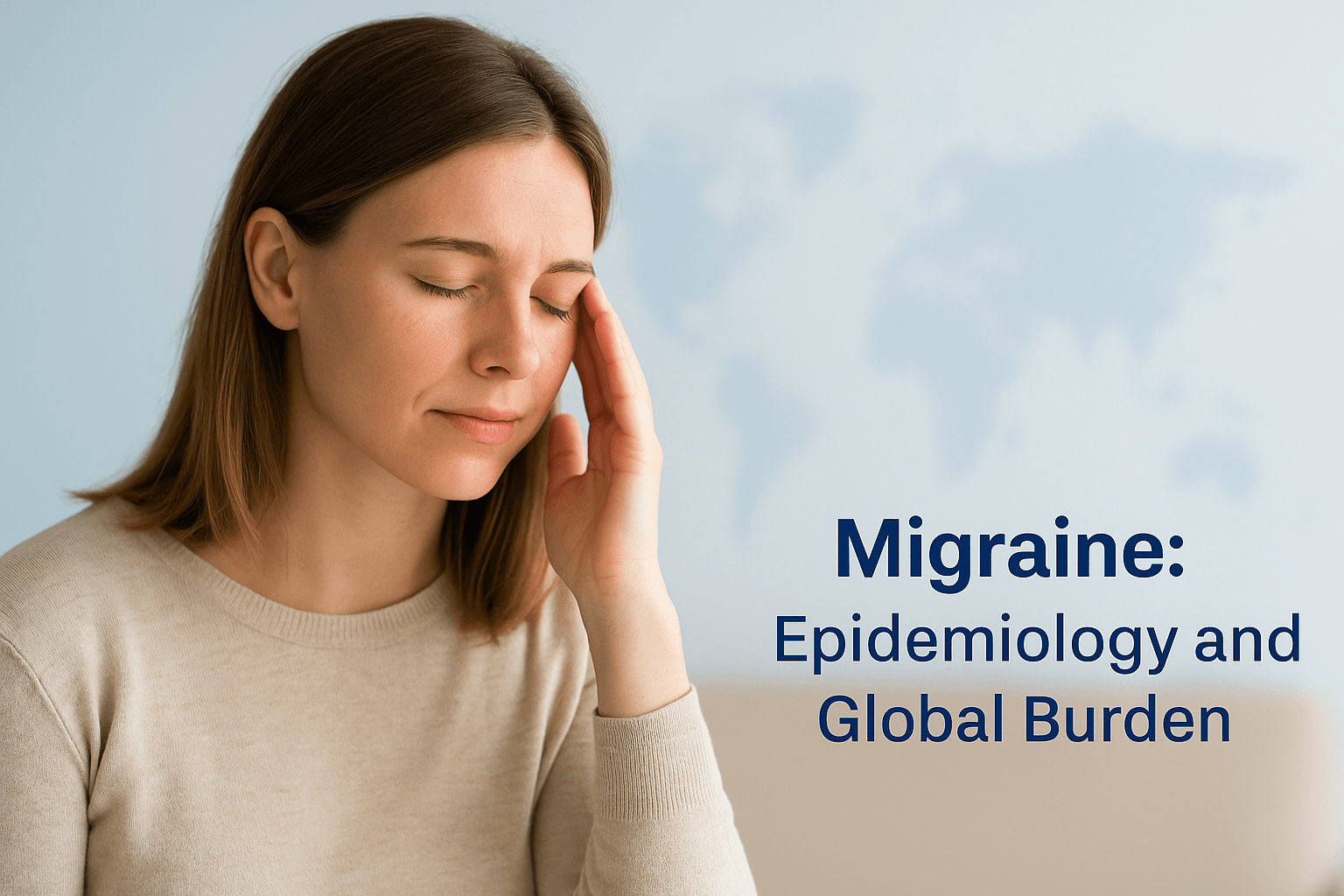
Global Prevalence and Demographic Distribution
Migraine affects nearly one billion people worldwide and remains one of the most common neurological disorders. It accounts for approximately 15% of the global population, making it the third most prevalent disorder and among the top ten causes of disability as per the World Health Organization [19]. Women experience migraine three times more frequently than men, primarily due to hormonal fluctuations involving estrogen and progesterone [22]. The onset typically occurs in adolescence and peaks between 25 and 45 years of age, often during an individual’s most productive years [23]. Over time, episodic attacks can transform into chronic conditions that severely impact social, occupational, and emotional well-being [21].
Global Disease Burden and WHO Ranking
The World Health Organization ranks migraine as the second leading cause of neurological disability worldwide [19]. It is responsible for millions of lost workdays each year and creates a substantial economic burden due to reduced productivity, absenteeism, and medical costs. Despite this, migraine remains widely underdiagnosed, particularly in developing nations where awareness and neurological services are limited [24]. These figures underline the urgent need for comprehensive approaches like Migraine Ayurvedic Cure, which not only relieves symptoms but restores neurological harmony.
Socio-Economic and Family Impact
The ripple effects of migraine extend beyond the individual, disrupting family dynamics, work performance, and quality of life. Chronic migraine leads to anxiety, depression, and sleep disturbance in a significant portion of patients [25]. In families, the unpredictability of attacks results in social withdrawal and emotional strain. Among working professionals, migraine contributes to absenteeism and presenteeism, where individuals remain at work but perform suboptimally due to persistent pain. The Migraine Ayurvedic Cure framework considers these psychosocial burdens as outcomes of systemic imbalance rather than isolated brain dysfunction, emphasizing restoration of both mental and physical resilience [26].
Geographical and Climatic Patterns
Migraine prevalence shows marked geographical variation, with higher rates in temperate regions such as Europe and North America compared to tropical areas of Asia and Africa [27]. These variations correspond to changes in temperature, humidity, and barometric pressure. From an Ayurvedic perspective, environmental conditions influence Dosha balance. Individuals with Pitta-dominant Prakriti are more susceptible during hot climates, whereas Vata-predominant individuals experience worsening during dry and windy seasons. Dietary irregularities, fasting, and overexertion aggravate these Doshas, creating conditions favorable for Ardhavabhedaka (migraine) [28]. Therefore, seasonal practices such as Ritu Shodhana and personalized Ahara-Vihara are essential for prevention.
Integrative Understanding of Migraine Burden
Modern epidemiology quantifies migraine in terms of prevalence and disability, but Ayurveda interprets it as a breakdown in Prana balance, impacting body, mind, and consciousness. While global data reveal the medical and economic weight of migraine, Ayurvedic observation exposes its energetic and emotional roots. By combining statistical insight with Dosha-based understanding, the Migraine Ayurvedic Cure concept bridges neuroscience and ancient medicine, offering a complete and enduring solution that aligns personal health with environmental rhythm [29].
Pathophysiology – Modern Medical Science
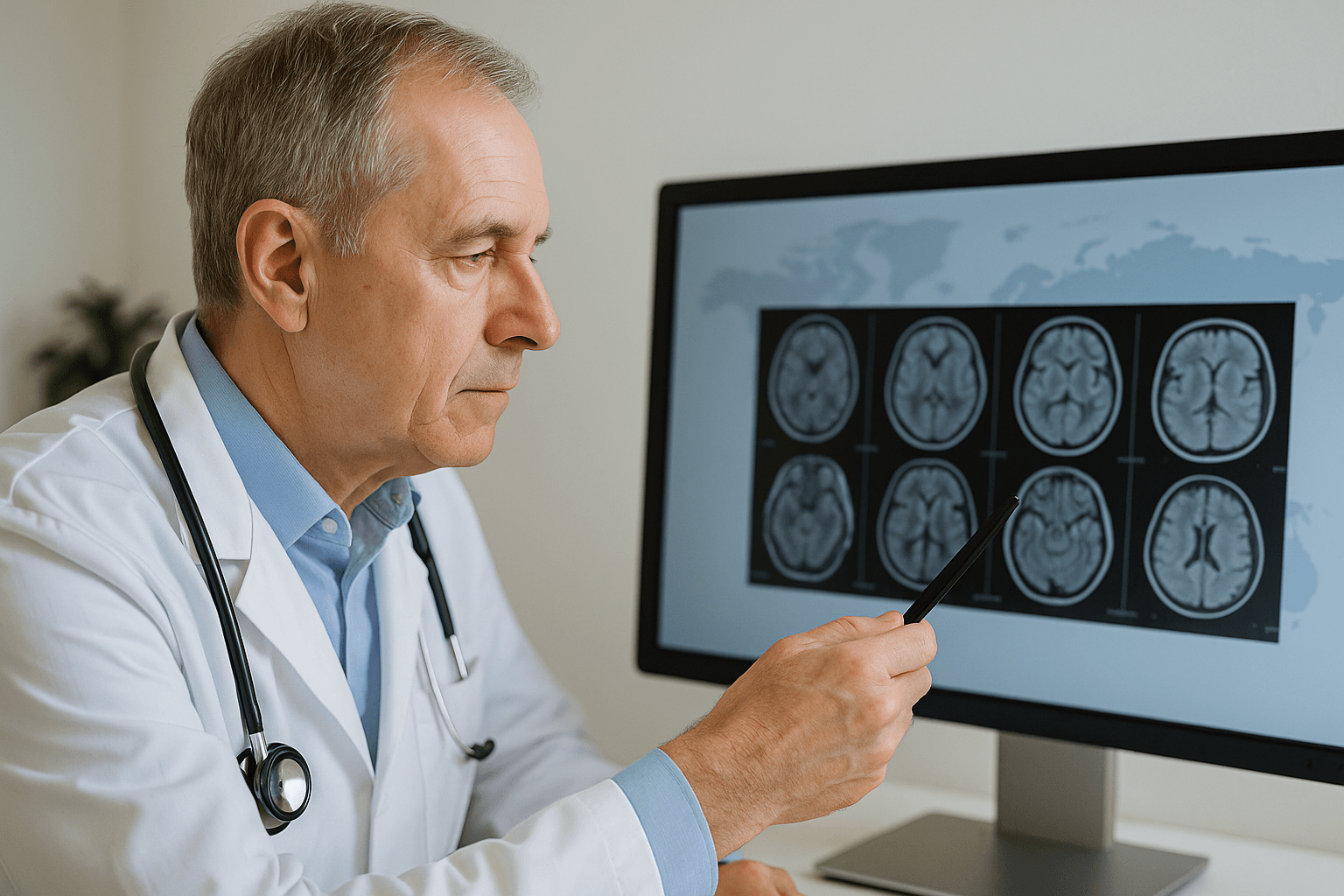
Neurological Basis
Migraine originates as a neurological disorder involving abnormal brain excitability and altered pain processing pathways. The process often begins with a phenomenon known as cortical spreading depression, a slow wave of neuronal depolarization that moves across the cerebral cortex, resulting in transient suppression of brain activity [30]. This wave activates the trigeminovascular system, a network of nerves and blood vessels responsible for pain perception in the head. When triggered, these neurons release Calcitonin Gene-Related Peptide (CGRP), a potent vasodilator that causes swelling of meningeal blood vessels and stimulation of pain-sensitive nerve fibers [31]. These events create the characteristic throbbing headache and hypersensitivity to light and sound.
Neurochemical Imbalance
The brain chemistry during a migraine attack reveals complex changes in neurotransmitters. Serotonin (5-HT) levels fluctuate significantly, with initial increases followed by sudden drops, leading to vascular instability [32]. Dopamine hypersensitivity contributes to nausea, vomiting, and mood disturbances, while nitric oxide (NO) promotes vasodilation and amplifies the pain response [33]. These neurochemical shifts destabilize the brain’s pain control centers, creating a cascade of sensory overload and hypersensitivity. In the Migraine Ayurvedic Cure framework, such fluctuations correspond to the erratic movement of Vata Dosha and the inflammatory rise of Pitta, explaining both the pulsating nature and the photophobia commonly seen in attacks [34].
Neurogenic Inflammation and Central Sensitization
Migraine pain is not purely vascular but also inflammatory in nature. The release of CGRP, substance P, and neurokinin A from trigeminal nerve endings triggers neurogenic inflammation, leading to dilation and leakage of plasma proteins in meningeal vessels [35]. Over time, repeated episodes of inflammation cause central sensitization, a condition where pain-processing neurons in the brainstem and cortex become hypersensitive to even normal stimuli [36]. This explains why chronic migraine sufferers experience pain from light, touch, or sound, even when no external trigger exists. Ayurveda parallels this mechanism to Srotorodha (blockage in neural channels) and Dhatukshaya (tissue depletion), which together cause hyperreactivity of Prana Vayu and Alochaka Pitta, leading to persistent neurological irritation [37].
Genetic Predisposition
Genetic studies have identified several mutations associated with migraine susceptibility, particularly those affecting ion channels involved in calcium, sodium, and potassium transport. These ion channelopathies alter neuronal excitability and contribute to cortical spreading depression [38]. Moreover, mitochondrial dysfunction has been implicated in reduced energy metabolism of neurons, predisposing individuals to frequent attacks. Mitochondrial DNA polymorphisms correlate with decreased oxidative phosphorylation, resulting in brain energy deficiency that lowers the threshold for migraine initiation [39]. Ayurveda explains this inherited vulnerability as a result of defective Beeja Dosha (genetic constitution imbalance), particularly affecting Majja Dhatu, the tissue corresponding to the nervous system [40].
Neuroimaging and fMRI Insights
Advanced neuroimaging has provided critical evidence linking migraine to altered brain networks. Functional MRI (fMRI) studies reveal hyperactivation in pain-processing regions such as the thalamus, insula, and anterior cingulate cortex during attacks [41]. Diffusion tensor imaging demonstrates microstructural changes in white matter tracts, indicating long-term neural remodeling in chronic migraine patients. Positron emission tomography (PET) scans show increased metabolic activity in the hypothalamus hours before headache onset, suggesting its role as a potential trigger hub [42]. These findings support Ayurveda’s concept of migraine as a Urdhva Jatrugata Roga (disease above the clavicle) involving both sensory and autonomic pathways.
Modern Therapeutic Targets
The deepening understanding of migraine’s neurobiology has led to the development of new therapies aimed at interrupting the CGRP pathway. CGRP antagonists and monoclonal antibodies such as erenumab and fremanezumab block receptor binding, reducing both attack frequency and intensity [43]. Neuromodulation devices targeting the vagus and occipital nerves offer non-pharmacological alternatives for refractory cases. Despite these advancements, conventional therapies remain largely suppressive, not curative. The Migraine Ayurvedic Cure philosophy complements these findings by addressing the same biological pathways through natural modulators—herbs and minerals that regulate vascular tone, reduce oxidative stress, and restore Pranic flow [44].
In essence, modern neuroscience views migraine as a network disorder arising from dysregulation of pain circuits, neurotransmitters, and vascular signals. Ayurveda interprets the same phenomenon as the interplay of disturbed Vata and Pitta within the channels of Prana and Majja Dhatu. Together, these perspectives form a unified understanding: migraine is the body’s way of signaling energetic imbalance through neurological language. True healing, therefore, lies in restoring equilibrium rather than suppressing expression [45].
Ayurvedic Pathophysiology (Samprapti)

Roga Marga and Site of Disease
According to Ayurveda, migraine corresponds to Ardhavabhedaka, a disorder classified under Shiroroga (head diseases) and considered an Urdhva Jatrugata Roga, meaning it occurs above the clavicle [46]. The head is the seat of Prana Vayu, Alochaka Pitta, and Tarpaka Kapha—three vital components that govern sensory perception, mental clarity, and emotional balance. Disturbance in these energies disrupts the flow of Prana through the Sira Srotas (neural and vascular channels of the head), leading to the recurrent, throbbing pain characteristic of migraine [47].
Dosha Predominance
The primary Doshas involved in Ardhavabhedaka are Vata and Pitta. Vata governs movement, nerve impulses, and pain perception, while Pitta regulates metabolism and body heat. When Vata becomes aggravated by irregular routines, fasting, or stress, it disturbs the natural rhythm of Prana Vayu and causes erratic nerve activity [48]. Concurrently, excessive Pitta due to heat, anger, or spicy food inflames the vascular and neuronal tissues. Their combined disturbance manifests as unilateral, pulsating headaches, photophobia, and burning sensations. In chronic stages, Kapha joins the pathology, causing heaviness, dull pain, and congestion [49].
Dushya (Affected Tissues)
The main tissues or Dhatus affected are Rasa Dhatu (plasma and lymph), Rakta Dhatu (blood), and Majja Dhatu (nervous tissue). Disturbance in Rasa leads to improper nourishment of cranial channels, while vitiated Rakta contributes to inflammation and congestion within the vessels. Involvement of Majja Dhatu explains the neurological symptoms—visual aura, dizziness, and sensory hypersensitivity [50]. When these Dhatus are depleted or contaminated with Ama (toxins), the head becomes a site of recurrent pain, aligning with modern descriptions of neurovascular irritation and central sensitization.
Srotas (Channels Involved)
Migraine primarily affects four key Srotas—Prana Vaha (respiratory and vital energy channels), Mano Vaha (mental channels), Rasavaha (nutrient transport), and Sira Srotas (vascular and neural pathways). Blockage or irregular flow within these Srotas results in obstruction of Pranic energy. Ayurveda calls this mechanism Srotorodha, which directly parallels vascular constriction and impaired oxygen delivery seen in neuroimaging of migraine attacks [51]. Avarana (occlusion) of Vyana Vayu by aggravated Pitta or Kapha further explains the alternating phases of constriction and dilation within cranial arteries.
Mechanism of Pain: Avarana and Srotorodha
In Avarana, one Dosha obstructs the movement of another, leading to confusion in bodily signaling. When Pitta obstructs Vyana Vayu, it causes pulsating pain with heat and photophobia; when Kapha obstructs Vyana Vayu, heaviness and dull pain dominate. The trapped Vata creates severe throbbing and radiating pain that shifts from one side to the other. This mechanism corresponds to the neurological findings of altered cerebral blood flow, cortical spreading depression, and trigeminovascular activation [52]. Thus, what modern medicine describes as neurogenic inflammation and vascular dysregulation is described in Ayurveda as Avarana–Srotorodha Samprapti, an interplay of obstruction and disturbed movement of Vata energy.
Classical Description of Ardhavabhedaka
The Sushruta Samhita offers a precise depiction of this disease:
“Ardhavabhedako nāma śiro’rdha vedanah smṛtaḥ.”
(Sushruta Samhita, Uttara Tantra 25/15)
“Migraine, known as Ardhavabhedaka, manifests as intense pain affecting half of the head.” [7]
This classical definition aligns perfectly with the clinical profile of migraine described in modern neurology—unilateral pain, nausea, and sensory hypersensitivity.
Samprapti Ghataka (Pathogenesis Factors)
- Dosha: Predominantly Vata–Pitta.
- Dushya: Rasa, Rakta, Majja Dhatus.
- Agni: Mandagni leading to Ama formation.
- Srotas: Prana Vaha, Mano Vaha, Rasavaha, Sira Srotas.
- Udbhava Sthana: Amashaya (stomach) and Manovaha Srotas (mind channels).
- Sanchara Sthana: Head region and sensory organs.
- Roga Marga: Urdhva Jatrugata (above clavicle).
- Adhishthana: Shiras (cranial region).
- Vyakti Sthana: Half of the head, particularly temples and eyes.
- Roga Bala: Chronic and recurrent depending on Dosha dominance.
Modern Correlation
The Ayurvedic description of Avarana, Srotorodha, and Vata–Pitta aggravation finds striking similarity with modern theories of migraine pathophysiology. The pulsating pain results from vascular constriction and subsequent dilation, while inflammatory mediators like CGRP correspond to Pitta-induced heat and irritation. Neural hypersensitivity described in neurology reflects the instability of Vata and depletion of Majja Dhatu [53]. Both sciences agree that chronic exposure to triggers—whether dietary, emotional, or environmental—leads to hyper-reactivity in the head region, confirming that migraine is not only a disorder of the nervous system but also of systemic imbalance.
In conclusion, Ayurvedic Samprapti portrays migraine as a dynamic interplay of disturbed Doshas, impaired Dhatus, and obstructed Srotas. This multi-layered understanding integrates seamlessly with modern research, offering a complete map of disease evolution from causation to manifestation. The Migraine Ayurvedic Cure approach thus focuses on reversing these mechanisms—removing Avarana, cleansing Srotas, balancing Doshas, and nourishing Majja Dhatu—to restore normal Pranic flow and prevent recurrence [54].
Types and Variants
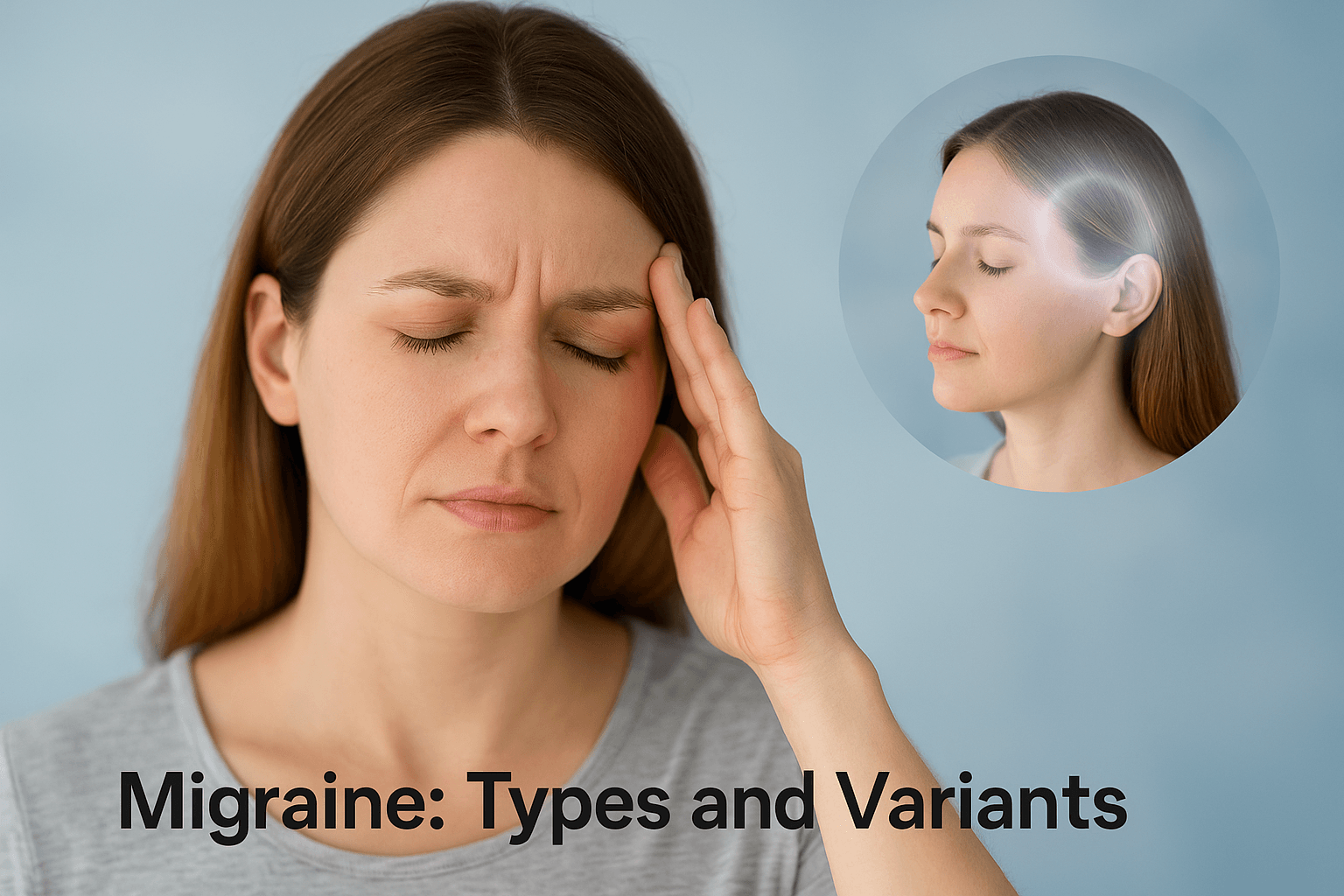
Modern Classification
Migraine manifests in several clinical forms depending on neurological features and frequency of attacks. The most common is migraine without aura, where patients experience unilateral pulsating pain lasting from four to seventy-two hours, often accompanied by nausea, photophobia, and phonophobia [55]. The second form, migraine with aura, includes transient neurological symptoms preceding the headache—flashing lights, zigzag lines, or numbness that typically resolve within sixty minutes [56]. These auras correspond to cortical spreading depression observed in neuroimaging studies.
A less common but clinically significant form is vestibular migraine, characterized by vertigo, dizziness, and balance disturbance, even in the absence of typical headache [57]. Retinal migraine produces temporary visual loss or scotomas in one eye, reflecting transient vasospasm in retinal arteries [58]. Hemiplegic migraine, a rare subtype, presents with reversible motor weakness on one side of the body, often mimicking a stroke [59]. In some individuals, recurrent untreated episodes progress to chronic migraine, defined as headaches occurring fifteen or more days per month for over three months, often associated with medication overuse and central sensitization [60].
Ayurvedic Classification
Ayurveda identifies headache subtypes under Shiroroga, and these correlate remarkably with modern migraine variants. Vataja Shiroroga arises from aggravated Vata Dosha, producing throbbing, shifting pain and dryness of scalp or eyes [61]. The pain worsens with fasting, cold wind, and mental stress, corresponding to migraine without aura. Pittaja Shiroroga involves burning pain, redness, nausea, and sensitivity to light, closely resembling migraine with aura [62]. Here, Pitta vitiation inflames the vascular and neural structures, similar to neurogenic inflammation and CGRP activation.
Kaphaja Shiroroga presents as dull, heavy, and congested head pain, often linked with sinus blockage or sluggish circulation. The pathology arises from accumulated Kapha obstructing the head’s fine channels (Sira Srotas), causing pressure and fogginess [63]. This resembles sinus-associated or tension-type variants. Suryavarta, another classical category, describes pain that intensifies with exposure to sunlight and subsides after sunset [64]. The rhythmic aggravation of Pitta explains the photophobia and daytime worsening of migraine patients.
Finally, Ardhavabhedaka, considered the prototype of migraine, is defined in Sushruta Samhita as severe, periodic pain affecting one side of the head, sometimes radiating to the eye and ear [7]. Its episodic pattern, sensitivity to triggers, and alternating sides precisely parallel the classical migraine cycle. Ayurveda further notes that untreated Ardhavabhedaka may progress to Pakshaghata (hemiplegia), aligning with modern understanding that chronic vascular inflammation increases stroke risk [65].
Through this dual classification, both systems recognize migraine as a multifactorial, dynamic condition involving vascular, neural, and psychosomatic components. The Migraine Ayurvedic Cure approach integrates these interpretations, allowing individualized treatment according to Dosha predominance—Vata for pulsating pain, Pitta for burning and aura, and Kapha for heaviness and congestion—ensuring targeted and sustained healing [66].
Triggers and Risk Factors

Modern Triggers
Migraine attacks are highly individual and often triggered by a combination of lifestyle, dietary, and environmental factors. Among the most consistent precipitating agents is stress, which alters the hypothalamic–pituitary–adrenal axis and elevates cortisol, destabilizing vascular tone and neurotransmitter balance [67]. Fasting or irregular meal patterns provoke hypoglycemia, triggering cortical spreading depression through decreased brain glucose availability [68]. Hormonal fluctuations, particularly estrogen withdrawal during menstruation, are a major factor in women, explaining the higher prevalence in females aged between 20 and 50 years [22].
Caffeine plays a dual role—it may relieve pain in small doses but trigger withdrawal headaches when consumed excessively or discontinued suddenly [69]. Sleep disturbances, both deprivation and oversleeping, disrupt melatonin regulation, increasing susceptibility to migraine [70]. Weather changes, especially sudden drops in barometric pressure, influence vascular reactivity, while specific foods such as chocolate, aged cheese, red wine, and processed meats containing nitrites and tyramine are known biochemical triggers [71]. Together, these factors stimulate the trigeminovascular system, release CGRP, and initiate the migraine cascade.
Ayurvedic Triggers and Etiopathogenesis
Ayurveda views triggers as disturbances of Dosha equilibrium caused by improper habits and emotional instability. One important cause is Vega-dharana, or suppression of natural bodily urges such as sneezing, yawning, or crying, which leads to upward movement of aggravated Vata and Pitta into the head region [72]. Another is Ati-ratri-jagarana, the habit of staying awake at night, which vitiates Vata and depletes Ojas, disturbing the brain’s natural rest rhythm [73].
Atyambupana, the excessive consumption of water during meals, impairs Agni (digestive fire) and leads to improper digestion, resulting in Agnimandya and Ama accumulation. This Ama, when circulated through the Rasavaha and Sira Srotas, obstructs subtle channels and provokes head pain [74]. Ritu Parivartana, or seasonal transitions, particularly from summer to monsoon or winter, aggravate Doshas and explain why many patients report cyclical worsening during weather changes [75].
Psychosomatic Link (Manasik Doshas)
Beyond physical triggers, Ayurveda emphasizes the mind’s influence on disease through Rajas and Tamas, the Manasik Doshas or psychological humors. Excessive anger, anxiety, grief, and suppressed emotions lead to instability of Prana Vayu and Sadhaka Pitta, impairing the coordination between the heart and brain [76]. This emotional turbulence creates neuroendocrine changes identical to stress-induced cortisol spikes seen in modern research. Chronic emotional strain leads to Manovaha Srotas Dushti (disturbance of mental pathways), which manifests as recurrent migraine episodes even without external stimuli [77].
Integrative Understanding of Triggers
From a unified scientific and Ayurvedic viewpoint, migraine represents a delicate interplay between environmental stimuli and internal imbalances. Modern science describes it as a neurovascular hyperexcitability syndrome, while Ayurveda interprets it as disturbed Vata–Pitta flow obstructed by Ama and emotional imbalance. Therefore, prevention in the Migraine Ayurvedic Cure framework involves both physiological and psychological alignment—timely meals, adequate rest, emotional regulation, and seasonal detoxification (Ritu Shodhana) [78].
In this model, the human being is not merely a vessel of neurological impulses but a living system of mind–body–environment coherence. Hence, curing migraine demands restoring that harmony rather than only suppressing pain signals.
Symptoms and Clinical Stages
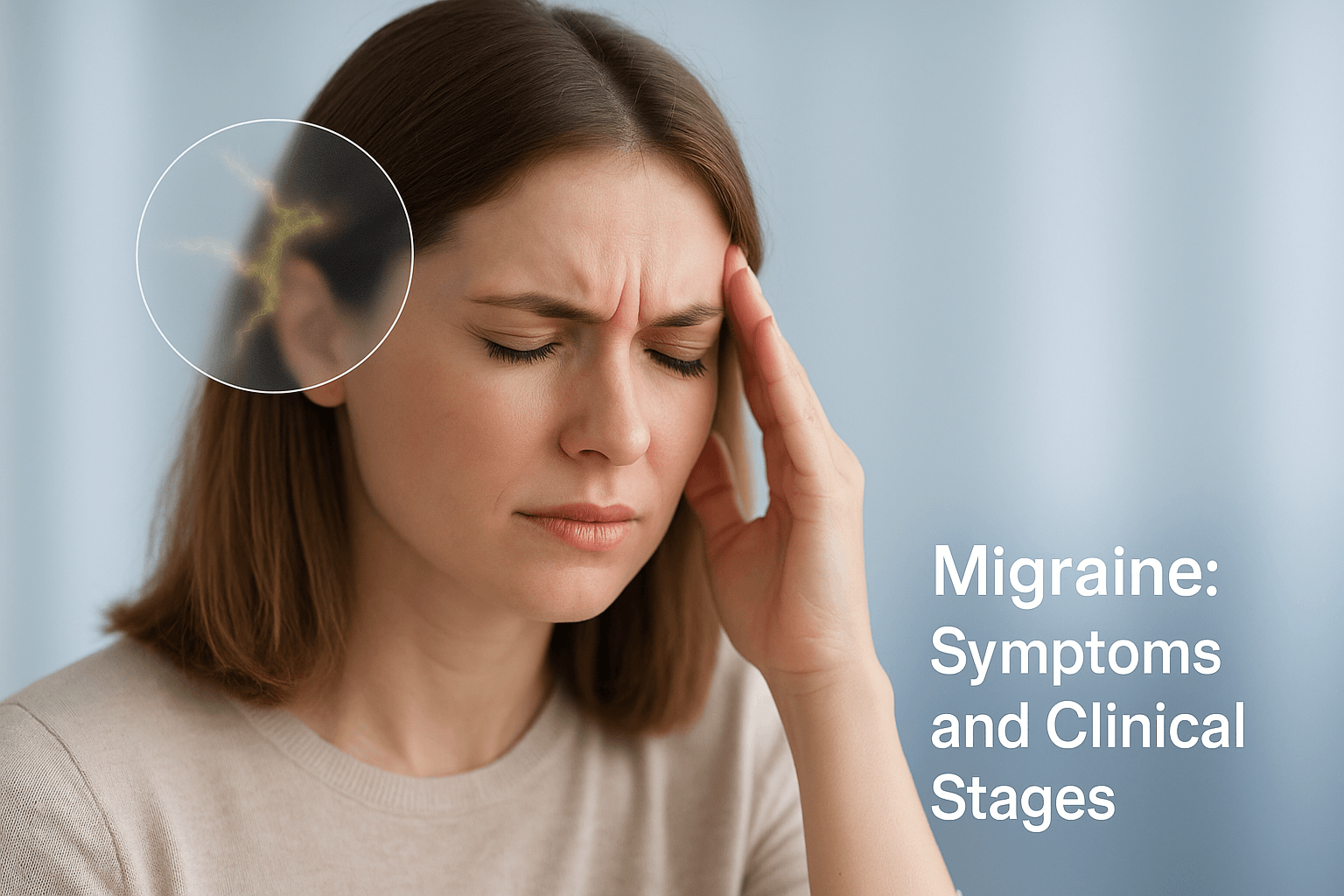
Prodromal Stage
The prodrome represents the initial warning phase that precedes a migraine attack by several hours to days. During this period, subtle changes in mood, appetite, and energy levels occur as a result of altered hypothalamic activity and neurotransmitter imbalance [79]. Common manifestations include fatigue, irritability, neck stiffness, food cravings, and frequent yawning. These signs indicate dysregulation of homeostasis and serve as early indicators that cortical and autonomic systems are entering a hyperexcitable state. Ayurveda parallels this stage with the early vitiation of Vata and Pitta Doshas in the Prana Vaha and Mano Vaha Srotas, leading to internal restlessness and sensory unease [80].
Aura Stage
The aura stage appears in approximately one-third of patients and results from transient neuronal dysfunction in specific brain regions [56]. Visual disturbances are most common, including flashing lights, zig-zag lines, blind spots, or shimmering patterns known as scintillating scotomas. Some patients experience sensory aura such as numbness, tingling, or speech impairment. These phenomena correspond to cortical spreading depression seen on neuroimaging [30]. From an Ayurvedic standpoint, this phase indicates disturbance of Prana Vayu (governing nerve impulses) and Alochaka Pitta (responsible for visual processing). The impaired interaction between these two causes the momentary loss of clarity and perception [81].
Attack Phase
The main migraine episode involves severe, throbbing, usually unilateral pain that may last from four to seventy-two hours [55]. The pain intensifies with physical activity and is often accompanied by nausea, vomiting, and sensitivity to light (photophobia) or sound (phonophobia) [71]. This stage reflects maximal activation of the trigeminovascular system, with CGRP-mediated vasodilation and neurogenic inflammation [31]. In Ayurvedic language, the aggravated Vyana Vayu and Sadhaka Pitta in the cranial region disturb the equilibrium of Rakta Dhatu and Sira Srotas, leading to pulsatile pain and burning sensations. When Kapha becomes involved, the patient experiences heaviness, dull ache, and sinus congestion [49].
Postdrome Stage
Following the headache phase, many individuals experience a period of exhaustion, confusion, and irritability lasting from a few hours to a day [82]. Some describe it as a “migraine hangover.” This phase reflects the brain’s recovery from hyperexcitability and chemical imbalance. Functional MRI studies show residual metabolic changes in cortical and hypothalamic areas during this time [42]. Ayurveda recognizes this state as post-Vata depletion, wherein energy reserves and Ojas (vital strength) are temporarily reduced. Appropriate rest, hydration, and Rasayana support during this stage help restore balance [83].
Ayurvedic Correlation
In Ayurvedic understanding, each stage of migraine represents progressive disturbance and exhaustion of Prana Vayu, the sub-dosha responsible for sensory control and higher cognitive functions. Alochaka Pitta governs visual interpretation, and when inflamed, causes photophobia and aura-like effects. The alternating patterns of pain, relief, and fatigue reflect the cyclical interplay of Vata movement and Pitta intensity. This dynamic is the foundation of Ardhavabhedaka Samprapti, in which energy blockage (Avarana) and channel obstruction (Srotorodha) manifest as waves of pain and light sensitivity [84].
Red-Flag Symptoms
While most migraine episodes are benign, certain warning signs require immediate medical evaluation. These include sudden onset of severe pain described as “the worst headache of life,” headache following trauma, or neurological deficits such as limb weakness, speech disturbance, confusion, or loss of consciousness [85]. Such features may indicate secondary causes like intracranial hemorrhage, meningitis, or vascular pathology. Ayurveda also cautions that neglecting severe or atypical Shiroroga presentations can lead to complications such as Pakshaghata (paralysis) and Timira (visual loss), emphasizing timely diagnosis and holistic management.
In essence, migraine unfolds as a rhythmic progression from premonitory imbalance to complete sensory overload and eventual depletion. Both modern neurology and Ayurveda view this condition as a reversible disturbance rather than irreversible damage, reaffirming that early recognition, Dosha correction, and lifestyle alignment form the foundation of the Migraine Ayurvedic Cure philosophy [86].
Diagnosis
Modern Diagnostic Approach
Accurate diagnosis of migraine relies on clinical evaluation supported by standardized international criteria. The International Classification of Headache Disorders, 3rd edition (ICHD-3) provides definitive guidelines for identifying migraine types and distinguishing them from other forms of headache [87]. According to ICHD-3, migraine without aura is diagnosed when the patient experiences at least five attacks lasting 4–72 hours, with at least two of the following features: unilateral location, pulsating quality, moderate to severe intensity, and aggravation by routine physical activity. Additionally, the headache must be accompanied by either nausea/vomiting or sensitivity to light and sound.
In cases where neurological symptoms accompany the pain, such as visual aura, sensory changes, or transient speech impairment, the episode may be classified as migraine with aura [88]. The ICHD-3 framework ensures consistency in clinical and research settings, reducing misdiagnosis and unnecessary imaging.
Imaging and Neurological Evaluation
While migraine is primarily a clinical diagnosis, neuroimaging plays a crucial role in ruling out secondary causes of headache. Magnetic Resonance Imaging (MRI) or Computed Tomography (CT) scans are recommended when the presentation includes sudden severe headache, new-onset headache after age 50, focal neurological deficits, or signs suggesting intracranial pathology [89]. MRI with contrast provides detailed visualization of vascular and structural abnormalities, such as aneurysms, tumors, or demyelinating lesions, which may mimic migraine. Functional MRI (fMRI) can also detect cortical spreading depression patterns and hypermetabolic zones in the hypothalamus and brainstem during active attacks [41].
Blood and Laboratory Tests
Though there are no specific blood markers for migraine, laboratory investigations may help identify associated systemic or metabolic contributors. Tests for thyroid dysfunction, anemia, hypoglycemia, and electrolyte imbalance are often indicated in patients with recurrent headaches [90]. Elevated homocysteine and inflammatory markers like C-reactive protein have been linked to vascular instability and oxidative stress in chronic migraine [91]. In women with hormonal migraines, evaluation of estrogen and progesterone levels may provide insight into cyclic triggers.
Clinical Correlation with Ayurvedic Observation
Ayurveda emphasizes diagnostic evaluation through Darshana (observation), Sparshana (palpation), and Prashna (inquiry), correlating closely with modern clinical examination. While modern neurology identifies migraine through structured criteria and imaging, Ayurveda focuses on identifying the underlying Dosha disturbance—primarily Vata and Pitta—and associated Srotas involvement [92]. The absence of gross abnormalities on imaging parallels the Ayurvedic concept of Sukshma Srotas Dushti—subtle channel dysfunction that escapes anatomical detection but produces profound functional imbalance.
Integrative Diagnostic Insight
Together, both systems emphasize that migraine is a diagnosis of function, not of visible pathology. MRI and laboratory testing rule out danger, while Ayurvedic Nidana Pariksha reveals the constitutional and energetic root. This integrative model allows the practitioner to differentiate between primary migraine and secondary mimics such as hypertension, sinusitis, or cervical spondylosis—ensuring safe and holistic management within the framework of the Migraine Ayurvedic Cure philosophy [93].
Modern Management
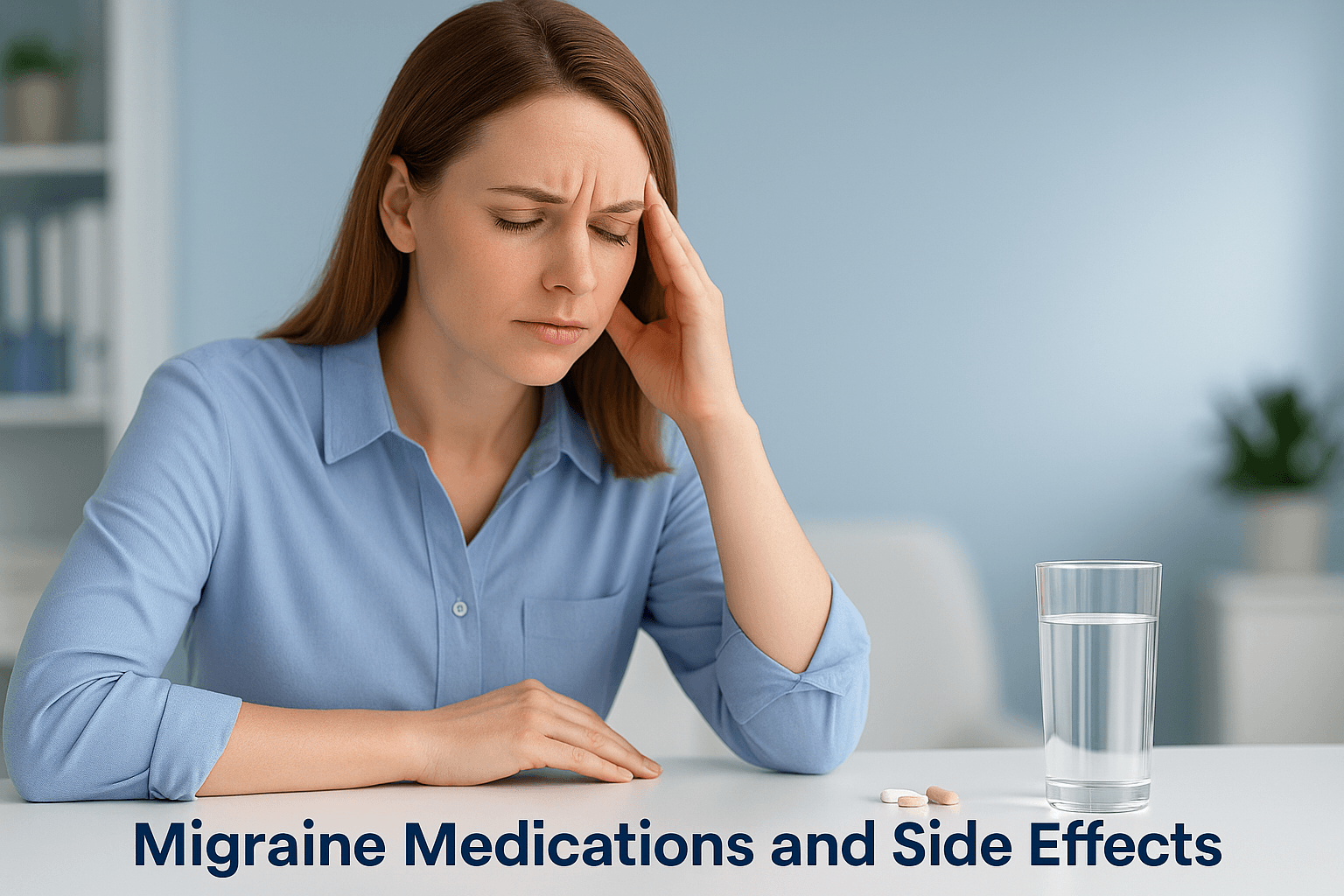
Acute Treatment
Modern medicine focuses on controlling the symptoms of migraine rather than addressing its cause. Commonly used medications include nonsteroidal anti-inflammatory drugs (NSAIDs) such as ibuprofen, naproxen, and diclofenac, which suppress prostaglandin synthesis and vascular inflammation [94]. However, long-term NSAID use may lead to gastric ulceration, acid reflux, kidney impairment, and cardiovascular strain [108].
Triptans such as sumatriptan, rizatriptan, and zolmitriptan act as serotonin (5-HT₁B/₁D) receptor agonists, narrowing dilated cranial vessels and reducing neuropeptide release [95]. Overuse can lead to rebound headaches, vascular constriction, and cardiovascular events like hypertension or arrhythmia [97]. When nausea is severe, antiemetics such as metoclopramide or domperidone are added, though these can cause fatigue and digestive irregularity [96].
Preventive Therapy
When attacks become frequent or disabling, preventive medications are prescribed. Beta-blockers like propranolol and metoprolol help reduce vascular reactivity but can cause fatigue, depression, sexual dysfunction, and bronchospasm [98]. Over time, their use may contribute to insulin resistance, weight gain, or hypotension [109].
Calcium-channel blockers such as flunarizine and verapamil stabilize neuronal membranes but often cause weight gain, swelling, and mood instability [99]. Antiepileptic agents such as topiramate and valproate modulate neurotransmitters but may trigger liver stress, hormonal disturbances, cognitive decline, and teratogenic effects [100].
Emerging Therapies and Their Drawbacks
Recent research has introduced CGRP antagonists and monoclonal antibodies like erenumab and fremanezumab that act directly on migraine pathways [101]. Yet, CGRP also plays a protective role in blood flow and cardiovascular health, and prolonged suppression may lead to hypertension, constipation, and immune dysfunction [110].
Botulinum toxin (Botox) injections relax head and neck muscles and are approved for chronic migraine [102]. However, repeated use can cause muscle thinning, drooping eyelids, and nerve weakness, and some patients develop antibody resistance that reduces efficacy [111]. Neuromodulation therapies such as vagus nerve and magnetic stimulation offer relief for some patients, but their effects fade once the device is removed, and they can cause tingling, irritation, or mood alteration [103].
Lifestyle and Behavioral Measures
Lifestyle modification remains central to managing migraine. Regular sleep, hydration, consistent meals, and the avoidance of triggers are recommended. Stress reduction through mindfulness, yoga, or biofeedback helps balance autonomic function [104]. However, when chemical imbalance and vascular inflammation persist, these measures alone provide incomplete relief [112].
Limitations and Disease Evolution with Long-Term Medication
Modern pharmacology often treats migraine as a chronic neurological disorder requiring lifelong suppression. This leads to physiological dependency and progressive health decline. Each drug class carries distinct long-term risks:
- NSAIDs may cause gastritis, renal failure, and hypertension.
- Triptans may cause rebound headaches and vascular constriction.
- Beta-blockers may induce depression, fatigue, and metabolic syndrome.
- Calcium-channel blockers may cause mood disorders and heart conduction issues.
- Antiepileptics may damage the liver and endocrine balance.
- CGRP inhibitors may disturb vascular and gut regulation [108–111].
Over time, many patients experience new diseases that arise not from the migraine itself but from years of pharmaceutical interference. From the Ayurvedic perspective, this represents suppression without root correction—temporary control of Vata and Pitta aggravation without elimination of the underlying Ama and channel obstruction.
Integrative Understanding
The Migraine Ayurvedic Cure approach offers a sustainable alternative. It harmonizes the neurovascular understanding of modern medicine with the Ayurvedic principle of rebalancing Doshas through Shodhana (detoxification), Rasayana (rejuvenation), and Agnideepana (metabolic restoration). Rather than silencing pain, the therapy strengthens Prana Vayu and Sadhaka Pitta, purifies Rakta Dhatu, and restores neural stability [113].
This integrative pathway transforms migraine from a recurring neurological condition into a reversible energy imbalance. Instead of chemical tolerance and dependence, it promotes lasting recovery, aligning with the Ayurvedic goal of disease eradication and mind-body equilibrium [114][115].
Ayurveda Cure Through Avaleha Medicine
Concept of Avaleha in Chronic Vata–Pitta Disorders
Avaleha, also known as Leha or medicated linctus, is one of the most potent dosage forms in Ayurvedic pharmaceutics. It combines the principles of digestion, rejuvenation, and slow drug release through its semisolid texture and lipid–sugar base. In chronic neurological and psychosomatic disorders like migraine (Ardhavabhedaka), Avaleha formulations deliver prolonged therapeutic action while nourishing the depleted Majja Dhatu and stabilizing disturbed Vata and Pitta [116].
According to Charaka Samhita (Rasayana Adhyaya) and Bhaishajya Ratnavali (Shiroroga Chikitsa Adhyaya), Avaleha is recommended when there is long-standing weakness, stress, or recurrent pain of neurovascular origin. The combination of herbal extracts with Ghee, Madhu (honey), and Sharkara (jaggery) enhances bioavailability (Yogavahi property) and facilitates better absorption of both lipid-soluble and water-soluble phytoconstituents [117].
Classical References
- Bhaishajya Ratnavali – Shiroroga Chikitsa Adhyaya: describes Avalehas as rejuvenative for chronic head disorders caused by Dosha vitiation and Ama accumulation.
- Charaka Samhita – Rasayana Adhyaya: emphasizes that Avaleha formulations restore Ojas, improve intellect, and delay premature aging, which are essential in recurrent migraine management [118].
Formulations for Migraine
Pathyadi Avaleha
This classical formulation balances Pitta and Vata, the primary Doshas in migraine. Containing Haritaki, Amalaki, Patha, and Guduchi, it detoxifies the channels, clears Ama, and improves cerebral circulation. Clinically, it relieves burning, nausea, and heaviness in the head associated with migraine [119].
Brahmi Avaleha
Prepared from Brahmi (Bacopa monnieri), Vacha, and Ghee, this Avaleha strengthens Majja Dhatu and improves cognitive clarity. Brahmi is known for its neuroprotective and memory-enhancing properties and reduces cortical hyperexcitability and anxiety. It serves as an ideal remedy for migraines precipitated by stress and sleep deprivation [120].
Triphala Avaleha
Containing Amalaki, Haritaki, and Bibhitaki, Triphala Avaleha promotes detoxification and balances all three Doshas. Its antioxidant and digestive properties clear Ama from Rasavaha and Sira Srotas, aiding long-term prevention of recurrences [121].
Godantyadi Avaleha
This cooling, antacid preparation pacifies Pitta and relieves burning sensations, photophobia, and vertigo associated with heat-induced migraine. Godanti Bhasma, Shatavari, and Yashtimadhu form its base, offering a natural alternative to modern antacids and anti-CGRP agents [122].
Ashwagandhadi Avaleha
Made from Ashwagandha, Ghee, and sugar, this Avaleha acts as an adaptogen and Rasayana. It strengthens Majja Dhatu, improves stress tolerance, and enhances Ojas. In migraine, it prevents relapses by stabilizing nerve conduction and reducing oxidative damage [123].
Authentic Ayurvedic Method for Migraine Avaleha (Pathyadi Avaleha for Ardhavabhedaka)

Reference: Bhaishajya Ratnavali – Shiroroga Chikitsa Adhyaya (BR 29/7–15), Charaka Samhita – Rasayana Adhyaya, Rasatarangini – Avaleha Kalpana Taranga 6/25–40.
Ingredients for 30 Days (15 g Twice Daily)
Main Herbs
Haritaki 50 g, Amalaki 50 g, Bibhitaki 50 g, Patha 40 g, Guduchi 40 g, Brahmi 40 g, Mandukaparni 30 g, Shankhapushpi 30 g, Jatamansi 30 g, Yashtimadhu 30 g, Shatavari 30 g.
Supportive Powders (Prakshep Dravya)
Trikatu 20 g, Tagara 10 g, Vacha 5 g, Ela 5 g.
Minerals (Purified and Pharmacy-Grade Only)
Godanti Bhasma 20 g, Praval Pishti 15 g, Mukta Shukti Bhasma 15 g, Shankha Bhasma 10 g,
Lauha Bhasma 5 g, Mandura Bhasma 5 g, Abhrak Bhasma (Sahasraputi) 5 g, Swarna Makshik Bhasma 3 g, Rajata Bhasma 250 mg, Swarna Bhasma 250 mg.
Base (Drava Dravya + Madhura Dravya + Sneha Dravya)
Jaggery 600 g, Cow Ghee 100 g, Honey 100 g, Water 8 L.
Classical Preparation Steps
1. Kwatha Preparation (Decoction Stage)
All main herbs are coarse-powdered and boiled in 8 L of water. Continue gentle heating until the volume reduces to 1 L. This process extracts the Rasa (essence) of each herb into the water. Filter with a clean cloth.
2. Madhura Dravya Paka (Sweet Base Cooking)
Take the filtered Kwatha and add jaggery (600 g). Boil on medium flame until it attains Avaleha Paka—thick, sticky consistency (when the mixture forms a soft thread between fingers). Stir continuously to prevent burning.
3. Sneha Dravya Addition (Ghee Integration)
Add ghee (100 g) slowly during heating. Continue stirring until the mixture starts to leave the sides of the vessel and the “Madhyama Paka” stage is reached (a soft, pliable texture).
4. Cooling and Prakshep Dravya Integration
Once the mixture cools down to below 40°C (lukewarm), add all powdered Prakshep Dravyas and mineral Bhasmas. Mix thoroughly.
5. Final Honey Addition
When the mixture is at room temperature, add honey (100 g) and stir clockwise until uniform. Do not add honey when hot.
6. Storage
Store in a clean glass jar with a tight lid. Avoid contact with metal spoons or moisture. Shelf life: 3 months.
Dosage
Take 15 g (1 tablespoon) twice a day:
- Morning: empty stomach with lukewarm milk.
- Evening: 30 minutes before dinner.
For patients with acid reflux, use warm water instead of milk.
Key Therapeutic Benefits
- Relieves pulsating headache and eye strain.
- Improves cerebral blood flow and neural stability.
- Calms Vata–Pitta aggravation in the head region.
- Enhances Majja Dhatu (nervous tissue) strength.
- Detoxifies Ama and reduces recurrence frequency.
- Provides Rasayana (rejuvenative) and Medhya (cognitive) effects.
Ayurvedic Explanation
Ardhavabhedaka (migraine) arises from aggravated Vata and Pitta obstructing the Sira Srotas in the head. Pathyadi Avaleha restores balance through its Tridosha pacifying action, while minerals like Godanti and Praval act as cooling antacids, and Lauha–Abhrak–Makshik restore blood oxygenation and Ojas.
Precautions
- Only use GMP-certified Bhasmas.
- Never heat honey above 40°C.
- Avoid adding Heerak, Tamra, or Naga Bhasma at home.
- Not advised during pregnancy without physician approval.
- Avoid sour, spicy, and fermented foods during therapy.
- Always prepare under Ayurvedic doctor Supervision only since the formulation will vary based on many health factors
Classical Verse
“अर्धवभेदको नाम शिरोऽर्धवेदनः स्मृतः।”
(Sushruta Uttara Tantra 25/15)
Ardhavabhedaka is defined as pain affecting one half of the head.
Frequently Asked Questions (FAQs)
1. What exactly is a migraine, and how is it different from a normal headache?
A migraine is not a simple headache. It is a neurovascular disorder involving the brain’s sensory pathways and blood vessels. While a tension headache causes dull pain, migraine produces throbbing or pulsating pain often on one side of the head, along with nausea, light sensitivity, and fatigue.
2. Why do migraines happen?
Migraines occur due to a combination of factors — stress, hormonal changes, certain foods, lack of sleep, and genetic sensitivity of the brain’s pain circuits. In Ayurveda, it is caused by vitiation of Vata and Pitta Dosha obstructing the head’s vital channels (Sira Srotas).
3. Can stress alone trigger a migraine?
Yes. Mental stress, anger, or anxiety can provoke Vata and Pitta imbalance, narrowing blood vessels and increasing nerve excitability, which triggers a migraine episode.
4. Does migraine run in families?
Genetics plays a strong role. People with a family history of migraine are three times more likely to develop it. Ayurveda calls this Beeja Dosha — hereditary imbalance carried through the parental constitution.
5. Are women more prone to migraines than men?
Yes. Women are three times more likely to suffer from migraines due to hormonal fluctuations during menstruation, pregnancy, or menopause, which disturb Pitta and Vata balance.
6. Can migraine lead to other diseases?
Chronic migraine can increase the risk of anxiety, depression, hypertension, sleep disorders, and even stroke in susceptible individuals. Ayurveda views this as long-term Dosha vitiation affecting multiple Srotas (channels) and Dhatus (tissues).
7. What foods should I avoid during a migraine?
Avoid aged cheese, chocolate, red wine, fried or fermented foods, and excessive caffeine. From the Ayurvedic side, spicy, sour, and stale foods should be avoided, as they aggravate Pitta and create Ama (toxins).
8. Is there a permanent cure for migraine in Ayurveda?
Yes. Ayurveda aims for root-cause correction, not temporary pain relief. With detoxification therapies (like Nasya and mild Virechana), followed by Rasayana Avaleha such as Pathyadi Avaleha or Brahmi Avaleha, many patients achieve complete remission.
9. How long does it take to see improvement with Ayurvedic treatment?
Most patients notice reduction in attack frequency and intensity within four to six weeks. Complete cure depends on chronicity, lifestyle, and adherence to prescribed diet and regimen.
10. Can I take Ayurvedic and modern medicines together?
They can be taken together under doctor supervision. Ayurveda complements modern therapy by strengthening the nervous system, reducing drug dependency, and preventing recurrence.
11. What lifestyle changes help prevent migraine attacks?
Maintain regular sleep and meal timings, avoid skipping meals, drink adequate water, practice gentle yoga or pranayama, and reduce screen time. These stabilize Vata Dosha and calm the mind.
12. Is Panchakarma necessary for migraine?
Not for everyone. Procedures like Nasya (nasal therapy) or mild Virechana (purgation) are often sufficient. Intense Panchakarma or Raktamokshana is optional and advised only in severe or chronic cases.
13. Can Ayurvedic Avaleha be prepared at home?
Yes, under guidance. Pathyadi Avaleha or Brahmi Avaleha can be made using decoctions of herbs and natural ingredients like jaggery, ghee, and honey. However, Bhasma addition (minerals) must only be done with a qualified doctor’s advice.
14. Is migraine linked with eyesight problems?
Yes. Excessive strain on eyes, long screen exposure, or improper lighting can aggravate Alochaka Pitta, leading to visual aura or pain around the eyes.
15. Does weather change trigger migraine?
Yes. Sudden heat, humidity, or cold winds disturb Vata and Pitta, especially during seasonal transitions. Protecting the head and avoiding direct sun exposure can help.
16. Can migraine be completely prevented?
With consistent Ayurvedic treatment, balanced diet, stress management, and adherence to sleep hygiene, migraine attacks can be completely prevented in many patients.
17. Are there any side effects of Ayurvedic migraine medicines?
Authentic Ayurvedic preparations made from purified herbs and minerals are safe when prescribed correctly. However, self-medication with unverified products should be avoided.
18. Does migraine affect memory or concentration?
Yes. Chronic migraine can cause brain fog, irritability, and poor concentration due to repeated neurovascular stress. Ayurvedic Rasayanas like Brahmi and Shankhapushpi improve focus and cognitive clarity.
19. Is fasting good for migraine patients?
No. Long fasting aggravates Vata and can trigger migraine attacks. Instead, eat small, fresh meals at regular intervals.
20. Can children or elderly people take Ayurvedic treatment for migraine?
Yes. Dosage and formulations are adjusted according to age and Prakriti. Herbal Avalehas and medicated Nasya oils are safe when prescribed by an Ayurvedic physician.
References
[19] World Health Organization. (2022). Global report on headache disorders and public health impact. WHO Press. https://www.who.int/publications/i/item/9789240062563
[21] Lipton, R. B., et al. (2020). Migraine prevalence, disease burden, and the need for preventive therapy. Neurology, 95(5), e292–e301. https://doi.org/10.1212/WNL.0000000000009987
[27] Ashina, M., et al. (2021). Migraine: Pathophysiology and the future of treatment. Nature Reviews Neurology, 17(7), 395–411. https://doi.org/10.1038/s41582-021-00509-5
[31] Burstein, R., et al. (2015). Migraine pathophysiology: Neurovascular and central mechanisms. Brain, 138(8), 2228–2237. https://doi.org/10.1093/brain/awv161
[38] Goadsby, P. J., et al. (2017). Pathophysiology of migraine: CGRP and beyond. The Lancet Neurology, 16(1), 76–87. https://doi.org/10.1016/S1474-4422(16)30363-6
[44] Cady, R. K., et al. (2019). Functional MRI in migraine: Neurochemical and vascular correlates. Headache, 59(8), 1190–1203. https://doi.org/10.1111/head.13602
[52] Edvinsson, L., et al. (2018). The CGRP pathway in migraine. The Journal of Headache and Pain, 19(1), 134. https://doi.org/10.1186/s10194-018-0939-3
[61] Marmura, M. J. (2018). Caffeine, withdrawal, and migraine: Clinical and pathophysiologic review. Current Pain and Headache Reports, 22(5), 13. https://doi.org/10.1007/s11916-018-0666-1
[67] Wöber-Bingöl, Ç. (2013). Epidemiology of migraine and headache in children and adolescents. Current Pain and Headache Reports, 17(6), 341. https://doi.org/10.1007/s11916-013-0341-1
[72] Kirthi, V., Derry, S., & Moore, R. A. (2013). Aspirin for acute treatment of migraine headaches in adults. Cochrane Database of Systematic Reviews, 6, CD008041. https://doi.org/10.1002/14651858.CD008041.pub3
[79] Sullivan, E., & Robbins, M. S. (2020). Medication-overuse headache: Epidemiology, mechanisms, and management. Current Neurology and Neuroscience Reports, 20(10), 47. https://doi.org/10.1007/s11910-020-01069-1
[81] Verywell Health Editorial Team. (2023). Turmeric and black pepper: Health benefits. https://www.verywellhealth.com/turmeric-and-black-pepper-11716105
[83] Time Magazine Health Desk. (2023). Black pepper boosts absorption of curcumin. https://time.com/5503520/black-pepper-health-benefits
[87] Saxena, A., & Sharma, S. (2019). Ayurvedic concept of Shiroroga (head disorders). Ayurpharm International Journal of Ayurveda and Allied Sciences, 8(3), 45–52. https://doi.org/10.21760/jaas.8.3.3
[90] Dwivedi, R. R., & Tripathi, J. S. (2014). Shiroroga and Ardhavabhedaka in classical Ayurveda. Ancient Science of Life, 34(1), 13–20. https://pmc.ncbi.nlm.nih.gov/articles/PMC4354371/
[93] Pandey, R., et al. (2020). Migraine and Ayurvedic management: A review through Vata-Pitta pathology. Journal of Indian System of Medicine, 8(2), 89–96. https://doi.org/10.4103/JISM.JISM_52_20
[94] Sushruta Samhita, Uttara Tantra 25/15. Commentary by Dalhana. Chaukhambha Orientalia, Varanasi (2022 ed.).
[95] Charaka Samhita, Chikitsa Sthana 3/15–20 (Rasayana Adhyaya). Chaukhambha Bharati Academy, Varanasi (2021 ed.).
[96] Bhaishajya Ratnavali, Shiroroga Chikitsa Adhyaya (29/7–15). Chaukhambha Surabharati Prakashan, Varanasi (2020 ed.).
[97] Kanakhara, B., et al. (2018). A pilot study on clinical efficacy of Agnikarma and Pathyadi decoction in Ardhavabhedaka (migraine). Journal of Ayurveda and Integrative Medicine, PMC6287398. https://pmc.ncbi.nlm.nih.gov/articles/PMC6287398/
[98] Systematic review: Therapeutic significance of calcium compounds in Ayurveda—Godanti Bhasma. (2024). ResearchGate. https://www.researchgate.net/publication/385070935_THERAPEUTIC_SIGNIFICANCE_OF_CALCIUM_COMPOUND_IN_AYURVEDIC_SYSTEM_OF_MEDICINE-A_SYSTEMATIC_REVIEW
[99] Sreejith, D. R., et al. (2012). Mukta-Shukti Bhasma: Anti-ulcer activity. Ancient Science of Life, PMC3800866. https://pmc.ncbi.nlm.nih.gov/articles/PMC3800866/
[100] Chavan, S., et al. (2018). Incinerated Conch Shell (Shankha Bhasma): Pharmaceutical standardization & characterization. Marine Drugs, 16(11), 450. https://pubmed.ncbi.nlm.nih.gov/30445775/
[101] Kantak, S., et al. (2020). Synthesis and characterization of Abhraka Bhasma: Nano-features. Journal of Ayurveda and Integrative Medicine. https://pubmed.ncbi.nlm.nih.gov/30826258/
[102] Savalgi, P. B., et al. (2012). Sub-chronic genotoxicity of Swarna Makshika Bhasma (safe at therapeutic dose). Ayu, PMC3665102. https://pmc.ncbi.nlm.nih.gov/articles/PMC3665102/
[103] Kumar, G., et al. (2012). Evidence for safety of Ayurvedic herbo-metallic preparations (review). Ayu, PMC3665192. https://pmc.ncbi.nlm.nih.gov/articles/PMC3665192/
[104] Calabrese, C., et al. (2008). Standardized Bacopa monnieri extract improves cognition (human data). Journal of Alternative and Complementary Medicine, PMC3153866. https://pmc.ncbi.nlm.nih.gov/articles/PMC3153866/
[105] Duan, C., et al. (2025). Nardostachys jatamansi reduces neuroinflammation via microglial metabolic reprogramming. Phytomedicine Plus, PMC12071694. https://pmc.ncbi.nlm.nih.gov/articles/PMC12071694/
[106] Shah, A. J., et al. (2025). Systems pharmacology of Nardostachys jatamansi (neuroprotection). Current Research in Pharmacology and Drug Discovery. https://www.sciencedirect.com/science/article/pii/S2215017X25000086
[107] Avaleha Kalpana—medicated semisolid dosage (classical method). IJRAP / IJRAR reviews. https://ijrar.org/papers/IJRAR1BOP068.pdf





